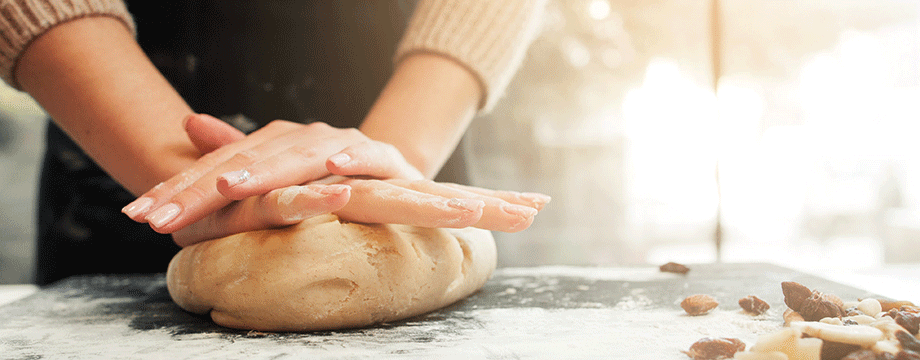The free-from cupboard

Grace Cheetham offers some suggestions for cooking with free-from foods
Look around the free-from section of a health food store or a large supermarket and you’ll find a large variety of gluten-free and dairy-free products. Food manufacturers are continually producing fantastic ingredients – all of which make it easier and easier to cook wonderful free-from food.
It’s well worth stocking up your cupboards so you have ingredients on hand. Fill your cupboards with all the different types of gluten-free pastas and noodles, as well as polenta and rice, and superfoods such as quinoa and amaranth. It’s also worth making sure you always have gluten-free soy sauce in your cupboards, as well as a good gluten-free and dairy-free stock (bouillon) powder, gluten-free baking powder and lower-GI sweeteners, such as agave syrup. Try adding kombu to a stock to supercharge the nutrient count of the dish. Pick up some xanthan gum and chia seeds, too. Both are brilliant at holding gluten-free baked goods together. Also, stock up on corn flour (corn starch) or kuzu for thickening soups, stews, sauces and fillings, and for creating crispy coatings.
Bread mix
Makes: 4¼ cups (34 fl oz/1 litre)
Ingredients
- 450g/5½oz/¾ cup brown rice flour
- 60g/2¼oz/⅓ cup potato flour
- 60g/2¼oz/½ cup cornflour (corn starch)
- 50g/1¾oz/½ cup gram (chickpea) flour
- 50g/1¾oz/⅓ cup maize flour
- 1 tsp xanthan gum
Method
Sift the flours and xanthan gum into a large mixing bowl and mix together.
Flour mixes
For baking, it’s a good idea to start with a selection of flours. It can be difficult to get the right combination of flours for different types of baked goods, and for different textures. Breads and cakes can often be too dry and crumbly, pastry can easily burn and fail to hold together and biscuits can be either rock hard or horribly soft. I’ve developed a set of flour mixes which I think tick all the boxes – producing bakes that really are just how you want them to be. I’ve used brown rice flour in all of the mixes as it is a great base flour. It has a lovely taste and holds really well. When the mix needs a stronger flour base, I’ve used a combination of chickpea flour (besan) and maize flour. These are both great in terms of holding together and, while the chickpea flour has quite a strong taste, when it’s combined with maize flour that has a subtle, slightly sweet taste, it works really well.
It’s important to create a balance of grain flours and starch flours, depending on the type of recipe. The flours I’ve just mentioned are all grain flours. Starch flours work slightly differently, in that they tend to lighten the mix and give rise to the baking. For starches, I’ve generally used corn flour (corn starch) because it’s inexpensive and easy to find, has a very bland taste and gives a fantastic consistency. For bread, however, I’ve added potato flour, which helps create a moist, tender crumb texture, as well as a better rise.
Alternative flours
Other flours commonly used are buckwheat, millet, teff, quinoa and soya. Other starches available are tapioca and white rice flour. If you decide you’d prefer to use an alternative flour, or if you need to expand your ingredients list (perhaps if you’re following a rotation diet), you can simply substitute a similar flour in the same quantities as those specified in the mix recipe.
Dairy-free
There are now a huge range of dairy-free products. Gone are the days of a few long-life soy milks – there are now dairy-free cheeses, yogurts, milks, creams, margarines and spreads, as well as the lactose-free ingredients for those who can’t digest lactose. And they’re not just soya products – you can find coconut, almond, hazelnut, rice, oat and legume varieties. Coconut products provide a fantastic source of immune-boosting energy and, along with their high levels of vitamins, and the fact that these fats can boost fat-burning, you can enjoy these delicious products and feel great about doing so! You can also make your own dairy-free ingredients. Cashew nuts make brilliant milk, cream and cheese, and you can experiment with other nuts, too, such as almonds and hazelnuts.
To egg or not to egg
Try the amazing aquafaba – the water from tinned legumes (chickpea water is the most commonly used). Or you can try egg-replacement products, which are often good for substituting small amounts of eggs. Alternatively, you can use additional baking powder or bicarbonate of soda (baking soda) and chia seeds or apple/pear purée.
Taken from The Ultimate Gluten Free, Dairy Free Collection. Text copyright © Grace Cheetham, Watkins Media 2019.
Read the Your Food articles archive here...
Read articles from our latest issue here...